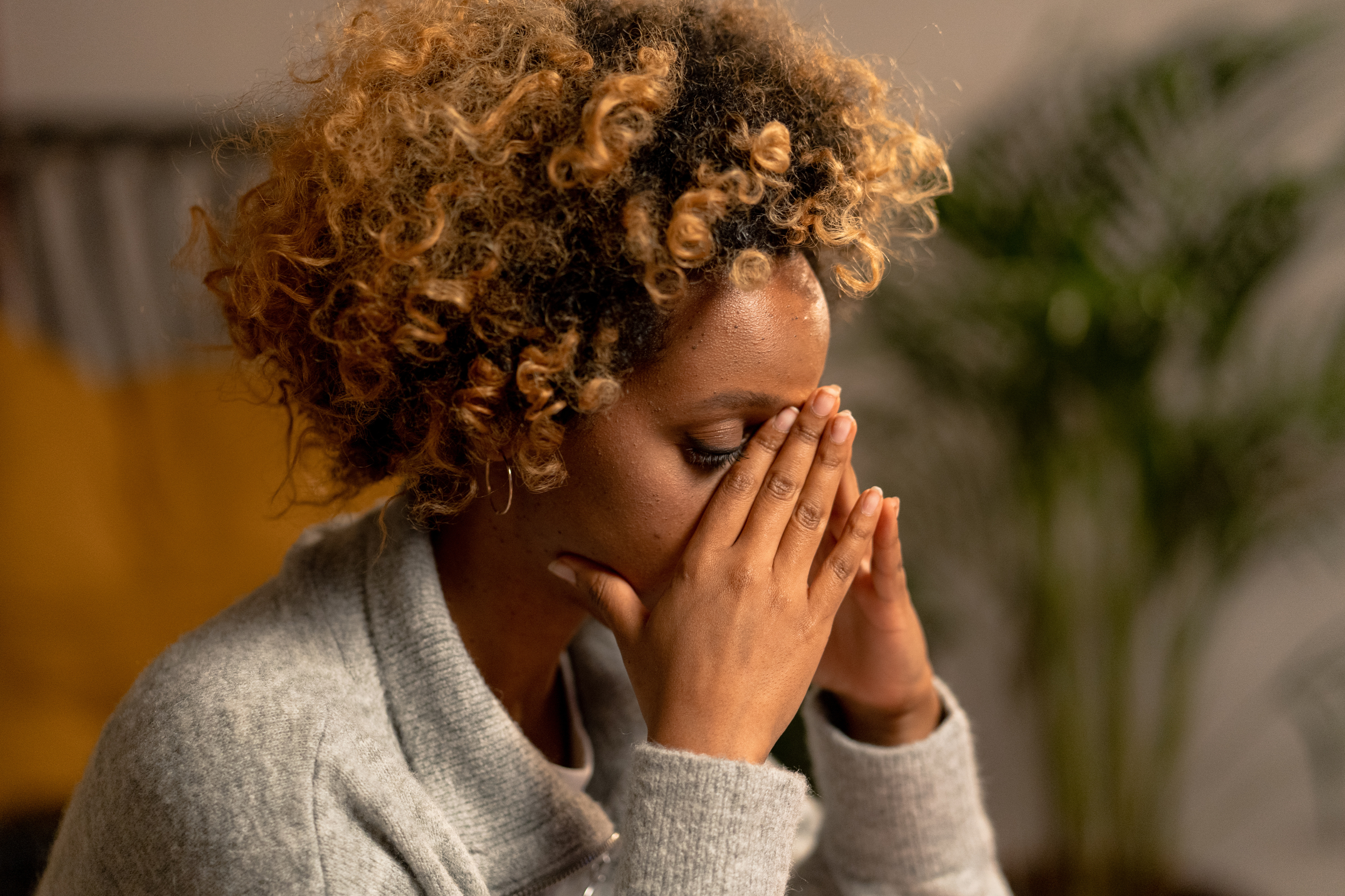Double Trouble
Illnesses are considered “comorbid” when a person experiences two or more conditions simultaneously.[1] One of the most common comorbid conditions is anxious depression (i.e., anxiety and depression) where roughly 45-67% of patients with major depressive disorder (MDD) meet criteria for at least one comorbid anxiety disorder and 30-63% of patients with anxiety disorder meet criteria for comorbid MDD.[2] The American Psychiatric Association defines someone as having MDD with anxious distress if they meet the criteria of major depressive disorder plus at least two of five anxiety symptoms (e.g., feeling keyed up or tense, being unusually restless, having trouble concentrating because of worry, having fear that something awful may happen, or feeling that one might lose control of oneself).[3]
How Is Anxious Depression Different?
Anxious depression has a few distinguishing factors from non-anxious depression. A study by Rajkumar R.P. (2022) found that people with comorbid depression and anxiety tend to have an earlier age at the onset of either illness, higher rates of childhood trauma, higher levels of neuroticism, more severe functional impairment, and poorer treatment response.[4] Additionally, people with anxious depression were found to have more frequent episodes of major depression, a higher risk of suicide ideation and previous suicide attempts.[5] Demographically, patients with anxious depression are significantly more likely to be in a primary care setting, female gender, non-single, unemployed, and less educated, according to the NIMH-funded “Sequenced Treatment Alternatives to Relieve Depression” project (STAR*D).[6] Physiologically, a study by Inkster et al. (2011) found that patients with anxious depression had more gray matter in their temporal gyrus compared to those with non-anxious depression.[7]
Reasons For Comorbidity
Multiple theories explain why the two illnesses co-occur so frequently. One view holds that the two conditions have similar biological mechanisms in the brain, making them more likely to appear together.[8] Another theory states that dysregulation of biological mechanisms (e.g., immune-inflammatory pathways, amygdala, hypothalamic-pituitary-adrenal axis) is the cause.[9] A developmental approach finds that insecure attachment in childhood creates a predisposition to the development of anxious depression.[10] Regarding the environment, theory states that the conditions often present simultaneously when an external stressor or stressors trigger a person.[11] Lastly, there is a diagnostic theory that states since anxiety and depression have many overlapping symptoms (e.g., problems with sleep), people frequently meet the criteria for both diagnoses.[12]
Treatment for Anxious Depression
The National Alliance on Mental Illness (NAMI) notes that anxious depression is often more challenging to treat due to the illnesses “working together” to cause more intense and persistent symptoms.[13] Thus, individuals may need more specialized treatments to combat their symptoms.[14] For example, if antidepressants prescribed by a psychiatrist improve a person’s mood but not their anxiety, the next step would be to seek a therapist for cognitive behavioral therapy (CBT).[15]
Various drug therapies are available to help treat anxious depression. An analysis by Choi et al. (2020) revealed that SSRIs were effective in treating anxious depression, benzodiazepines can be used to augment SSRI and treat baseline anxiety, and atypical antipsychotics can be used as augmentation agents for treating major depressive disorder.[16]
If you think you or someone you know may have Anxious Depression, please reach out to a licensed mental health professional (e.g., a psychotherapist, psychologist or psychiatrist) for additional guidance and support.
Contributed by: Maria Karla Bermudez
Editor: Jennifer (Ghahari) Smith, Ph.D.
References
1 Salcedo, B. (2018, January 19). The comorbidity of anxiety and depression. NAMI. https://www.nami.org/Blogs/NAMI-Blog/January-2018/The-Comorbidity-of-Anxiety-and-Depression
2 Choi, K. W., Kim, Y. K., & Jeon, H. J. (2020). Comorbid Anxiety and Depression: Clinical and Conceptual Consideration and Transdiagnostic Treatment. Advances in experimental medicine and biology, 1191, 219–235. https://doi.org/10.1007/978-981-32-9705-0_14
3 American Psychiatric Association. Diagnostic and statistical manual of mental disorders. 5th ed. Washington, DC: American Psychiatric Association; 2013.
4 Rajkumar R. P. (2022). Comorbid depression and anxiety: Integration of insights from attachment theory and cognitive neuroscience, and their implications for research and treatment. Frontiers in behavioral neuroscience, 16, 1104928. https://doi.org/10.3389/fnbeh.2022.1104928
5 Choi et al., (2020)
6 Fava M, Rush AJ, Alpert JE, Carmin CN, Balasubramani GK, Wisniewski SR, et al. What clinical and symptom features and comorbid disorders characterize outpatients with anxious major depressive disorder: a replication and extension. Can J Psychiatry. 2006;51(13):823–35.
7 Inkster B, Rao AW, Ridler K, Nichols TE, Saemann PG, Auer DP, et al. Structural brain changes in patients with recurrent major depressive disorder presenting with anxiety symptoms. J Neuroimaging. 2011;21(4):375–82
8 Salcedo (2018)
9 Rajkumar (2022)
10 Ibid.
11 Salcedo (2018)
12 Ibid.
13 Ibid.
14 Ibid.
15 Ibid.
16 Choi et al., (2020)
